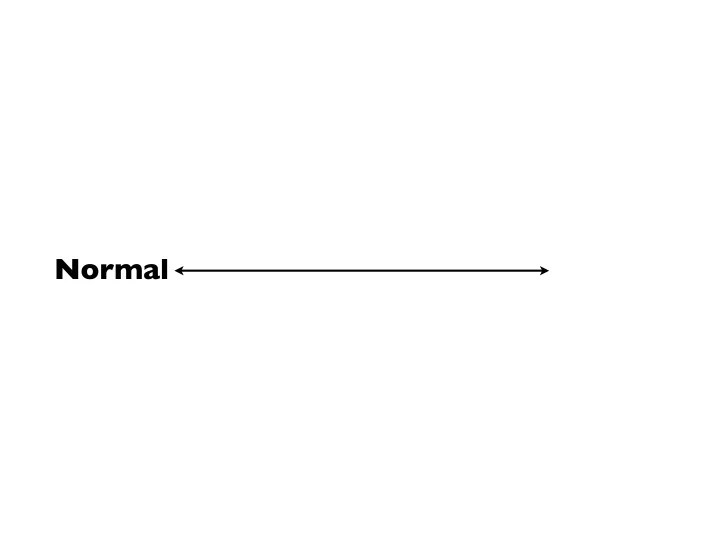

Normal
A Spectrum of Engineering Design Normal Radical
A Spectrum of Engineering Design Normal Radical
Characterizing the Spectrum Normal Radical • ? • ?
Characterizing the Spectrum Normal Radical • expect to work in a wide • hope it works in 3 cases variety of well-understood cases
Characterizing the Spectrum Normal Radical • reduced risk • innovation is expensive and time consuming • reduced cost • harder requirements • easier communication elicitation • harder verification • easier maintenance • shorter development time
Sez who? • Michael A. Jackson The Name & Nature of Software Engineering • Walter G. Vincenti What Engineers Know and How They Know It • Edward W. Constant The Origins of The TurboJet Revolution
A Space of Engineering Design Radical components Normal composition
SE2 is about normal modes of composition. Most of the other courses that you’ve taken so far have been about normal components: e.g., databases, compilers, operating systems, etc. (or basic skills, e.g. math)
There are two ways of constructing a software design. • One way is to make it so simple that there are obviously no deficiencies. • And the other way is to make it so complicated that there are no obvious deficiencies. C.A.R. Hoare Turing Award Speech, 1980
Design Disciplines Part II
Is there something common amongst the design disciplines?
IDEO
Physical Technical Human Conceptual
Physical Mech. E. Industrial Physics Graphic Ergo. Process E. Technical Human Web H.C.I. Hardware E. CS Interaction Software E. Conceptual
Definitions • The fundamental organization of a system, embodied in its components, their relationships to each other and the environment, and the principles governing its design and evolution. • A plan for arranging elements in such a way as to best accomplish a particular purpose.
Design Process Part III
The Design Process 1. Ideation 2. Analysis 3. Selection 4. Elaboration Iterate
How to get new ideas? • try a different architectural style • relax a constraint • change the technology • re-imagine the problem • draw inspiration from another problem/soln • try a different point on the Pareto-front
Criteria for Analysis • Fitness for Purpose • Fitness for Future • Production Cost • Operating Cost
Characterizing Fitness for Purpose • Absence of deadlocks • ACID • Book checked out by at most one patron • Linked-list is acyclic • etc.
Analyzing Fitness for Purpose • Other engineering disciplines use math. • We can use it too! • Model-checking • Queuing theory • etc.
Comparative Analysis
Comparative Analysis Speed dominated solutions Cost
The Pareto Front • The set of non-dominated solutions/designs. • aka Pareto-Optimal, Pareto-Efficient designs • N.B.: • the design space is partially ordered • not totally ordered!
Summary • Normal vs Radical Design • Commonalities amongst Design Disciplines • The Design Process creativity • Ideation math! • Single Design Analysis: Fitness for Purpose • Comparative Design Analysis: Pareto Front math!
Recommend
More recommend